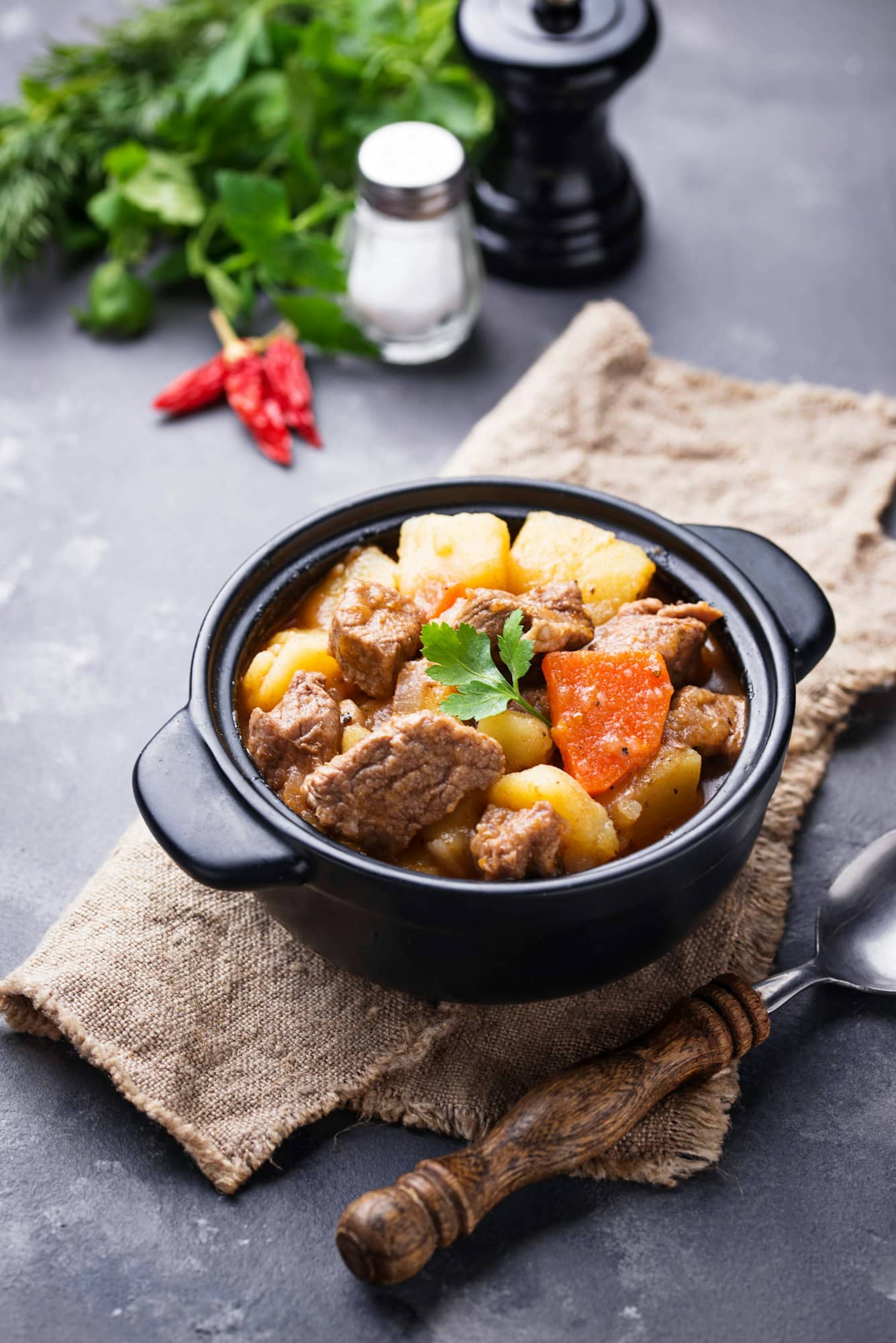Picture this: a simmering pot of seafood stew, your kitchen infused with the savory aroma of the sea infused with tomatoes, onions, and a dash of white wine. You take a spoonful and are immediately transported to a cozy coastal restaurant where the stew is always fresh, delicious, and incomparable. But did you know that you can recreate this restaurant-quality seafood stew right in your own kitchen?
Let’s dive in, shall we?
In the same genre : Can You Master the Technique of Air Frying for Healthier Gourmet Snacks?
Deciphering the Basics of Seafood Stew
Seafood stews, like the Italian cioppino or a hearty bouillabaisse, are culinary delights revered for their fresh taste and complex flavors. The secret to making a great seafood stew starts with understanding its key components.
Firstly, seafood is the star of the show. You can experiment with a variety of seafood like clams, mussels, shrimp, fish, and even crab. The fresher the seafood, the better the flavor. It is optimal to choose high-quality seafood from reliable sources.
Additional reading : How to Use Fermentation to Enhance the Flavor of Homemade Breads?
Secondly, broth forms the soul of the stew. The broth is usually a concoction of seafood stock, tomatoes, onions, garlic, herbs, and wine. It provides a robust and flavorful base that complements the seafood perfectly.
Lastly, cooking time plays a crucial role in seafood stews. Overcooking can make the seafood tough and the flavors muddled. Therefore, it is essential to add the seafood at the right time and cook it just enough to keep it tender and flavorful.
Unveiling the Magic of a Perfect Seafood Broth
A well-made broth can elevate your seafood stew from good to great. Start with a base of onions, celery, and carrots sautéed in olive oil. Add in your aromatics like garlic, bay leaves, and thyme. This is a technique chefs call a "mirepoix", an essential base for many soups and stews.
Once the mirepoix is fragrant, add tomatoes, preferably fresh or good-quality canned ones. The acidity from the tomatoes balances the richness of the seafood. Next, pour in the stock. Seafood stock, chicken stock, or vegetable stock can be used. However, homemade seafood stock is preferred for a more robust flavor.
The secret ingredient that restaurant chefs often use in their seafood stews is a splash of wine. White wine not only enhances the flavor but also helps to tenderize the seafood. Add the wine after the mirepoix and let it reduce before adding the stock and tomatoes.
Timing Is Everything: When to Add the Seafood
The biggest challenge in cooking seafood stew at home is getting the timing right. Different types of seafood require different cooking times. To ensure that each type of seafood is perfectly cooked and to prevent overcooking, add the seafood to the pot in stages.
Start with the seafood that takes the longest to cook. Clams and mussels usually go in first as they take around 10 minutes to open up. Next, add firm fish cuts as they take a little longer to cook than softer fish. After another 5 minutes, add the shrimp, and finally add delicate fish and any other quick-cooking seafood.
If you’re using squid or octopus, it should be simmered for a longer time to ensure it becomes tender and not rubbery.
The Finishing Touches: Adjusting the Seasoning
The final step in preparing your restaurant-quality seafood stew is adjusting the seasoning. Salt not only enhances the flavor of the dish but also brings out the sweetness of the seafood. However, be careful not to over-season. It’s always better to under-season and let everyone add extra salt to their own taste.
Apart from salt, fresh herbs also play a crucial role in elevating the taste of your stew. Fresh parsley or basil leaves add a refreshing touch and a burst of color to the dish.
A Delicious Seafood Stew Recipe to Try at Home
Let us now put our learnings into practice with a simple yet delicious seafood stew recipe that can be prepared in under an hour.
Ingredients:
- 1/4 cup olive oil
- 1 onion, diced
- 2 celery stalks, diced
- 1 carrot, diced
- 4 cloves garlic, minced
- 1 bay leaf
- 1 tsp dried thyme
- 1 cup white wine
- 1 can (28 oz) diced tomatoes
- 4 cups seafood stock
- 1 lb clams
- 1 lb mussels
- 1 lb firm fish, cut into 2-inch pieces
- 1 lb shrimp, peeled and deveined
- Salt, to taste
- Fresh parsley, for garnish
Instructions:
- Heat the olive oil in a large pot. Add the onion, celery, and carrot and sauté until softened, about 5 minutes.
- Add the garlic, bay leaf, and thyme. Cook until the garlic is fragrant, about 1 minute.
- Add the white wine and let it reduce by half, about 5 minutes.
- Add the diced tomatoes and the seafood stock. Bring to a simmer and let it cook for 20 minutes.
- Add the clams and mussels to the pot. Cover and cook until they start to open, about 10 minutes.
- Add the fish to the pot and cook for another 5 minutes.
- Add the shrimp to the pot and cook until they are pink and opaque, about 5 minutes.
- Season with salt to taste and garnish with fresh parsley.
This recipe is a basic guide to making a seafood stew. Feel free to adjust the ingredients and their quantities to your liking. Remember, the secret to a great seafood stew is fresh ingredients, a flavorful broth, and perfect timing. Happy cooking!
Mastering the Art of San Francisco-style Cioppino Recipe
While you can experiment with different types of seafood stews, one of the most adored is the San Francisco-style Cioppino. It’s a delightful medley of fish and shellfish, simmered in a tomato-based broth with onions, garlic, and white wine. This stew stands out due to its distinctively bold and layered flavors.
To make a Cioppino recipe at home, you’d need a variety of seafood. This might include white fish such as cod or halibut, clams, mussels, shrimp, and optionally, crab. The choice of seafood is flexible and can be adjusted based on your preferences.
The broth for your Cioppino will be key. Begin with a base of onions, garlic, and red pepper flakes sautéed in olive oil. The addition of bell peppers is a distinct characteristic of a good Cioppino recipe. For the liquid, you will need a combination of tomatoes, white wine, and clam juice or chicken stock. The clam juice adds an extra layer of seafood flavor. However, if clam juice is not available, chicken stock serves as a good alternative.
Remember, the seafood is the star of the stew, so it’s worth investing in the freshest, highest quality selection you can find. And like in any seafood soup, getting the timing right on when to add each piece of seafood is crucial for a well-cooked dish.
Seafood Stew Variations And Soup Recipes
There is a myriad of ways to prepare seafood stews depending on the region and local ingredients available. For instance, a Mediterranean fish stew might include saffron and orange zest, while a New England fish chowder could contain potatoes and cream.
Moreover, there are countless seafood soup recipes out there for you to try. From a spicy Thai shrimp soup to a traditional Mexican seafood soup laden with chili and lime, the possibilities are endless.
Also, you can adapt the recipe according to dietary needs. If you’re on a low-carb diet, you might want to forego potatoes and add more seafood instead. For vegetarians, a hearty vegetable stock can replace the clam juice or chicken stock, and various types of mushrooms can substitute the seafood for a similar texture.
Concluding Thoughts
Creating restaurant-quality seafood stews at home may seem intimidating, but with a little practice and understanding of the basics, you’ll be whipping up a pot of aromatic, delicious stew in no time. Remember, the secret lies in the choice of fresh seafood, a flavorful broth, and the timing of adding the seafood.
Whether you’re making the San Francisco Cioppino or experimenting with your own version of seafood stew, it all comes down to quality ingredients and your personal touch. So, heat up your stovetop and get ready to transport your taste buds to a seaside restaurant right in the comfort of your home. And don’t forget, the best part about cooking at home is that you can adjust the flavor to your liking. So, we encourage you to experiment with different herbs, spices, and types of seafood until you find your perfect stew recipe. Happy cooking!
















